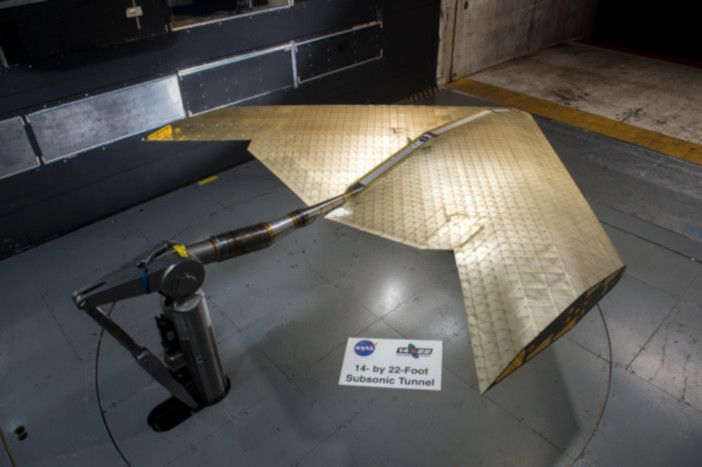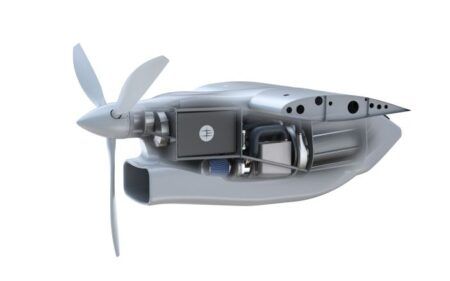A team of engineers in the USA have built and tested an aircraft wing able to change shape and control flight, which they say offers increased efficiency in the areas of production, flight, and maintenance they claim.
The wing was constructed by researchers from NASA and MIT from hundreds of tiny identical pieces, affording greater flexibility in the design and manufacture of future aircraft.
Instead of requiring moveable surfaces and mechanisms such as ailerons to control flight, the assembly system of the morphing wing makes it possible to deform it entirely, or parts of it, by incorporating a mix of stiff and flexible components in its structure.
The wing is made up of tiny triangles of matchstick-like struts, bolted together to form an open, lightweight lattice framework, which are then covered with a thin layer of similar polymer material as the framework. MIT describes the wing as being made of a mechanical “metamaterial” that combines the structural stiffness of a rubber-like polymer and the extreme lightness and low density of an aerogel.
The wing was designed to be as large as could be accommodated in NASA’s high-speed wind tunnel at Langley Research Center, where it was recently tested and performed better than predicted.
“We were able to gain efficiency by matching the shape to the loads at different angles of attack,” said NASA Ames’ research engineer Nicholas Cramer. “We were able to produce the exact same behavior you would do actively, but we did it passively.”
Researchers demonstrated the basic underlying principle for the moving wing a few years ago, producing a 1m (3.2ft) long wing, comparable to the size of a typical remote-controlled model aircraft. The new version, about five times as long, is comparable in size to the wing of a real single-seater plane.
While it would be possible to include motors and cables to produce the forces needed to deform the wings, the team has designed a system that automatically responds to changes in its aerodynamic loading conditions by shifting its shape — a self-adjusting, passive wing-reconfiguration process.
Co-researcher on the project and MIT graduate student, Benjamin Jenett said that for each of the phases of a flight — takeoff and landing, cruising, maneuvering and so on — each has its own, different set of optimal wing parameters, so in a conventional wing is necessary to compromise efficiency to accommodate these. A wing that is constantly deformable could provide a much better approximation of the best configuration for each stage.
The deformation is accomplished by the careful design of the relative positions of struts with different amounts of flexibility or stiffness, designed so that the wing, or sections of it, bend in specific ways in response to particular kinds of stresses.
Jenett said, “We have a manufacturing method and with upfront investment in tooling the parts are cheap. We have boxes and boxes of them, all the same.”
The lattice metamaterial the wing is made out of has a density of 5.6kg per cubic meter. By way of comparison, rubber has a density of about 1,500kg per cubic meter. “They have the same stiffness, but ours has less than roughly one-thousandth of the density,” Jenett added.
“You can make any geometry you want. The fact that most aircraft are the same shape is because of expense. It’s not always the most efficient shape.”
Studies have shown that an integrated body and wing structure could be far more efficient for many applications, Jensaid, and with this system those could be easily built, tested, modified, and retested.
Daniel Campbell, a structures researcher at Boeing company Aurora Flight Sciences said, “The research shows promise for reducing cost and increasing the performance for large, light weight, stiff structures. Most promising near-term applications are structural applications for airships and space-based structures, such as antennas.”





